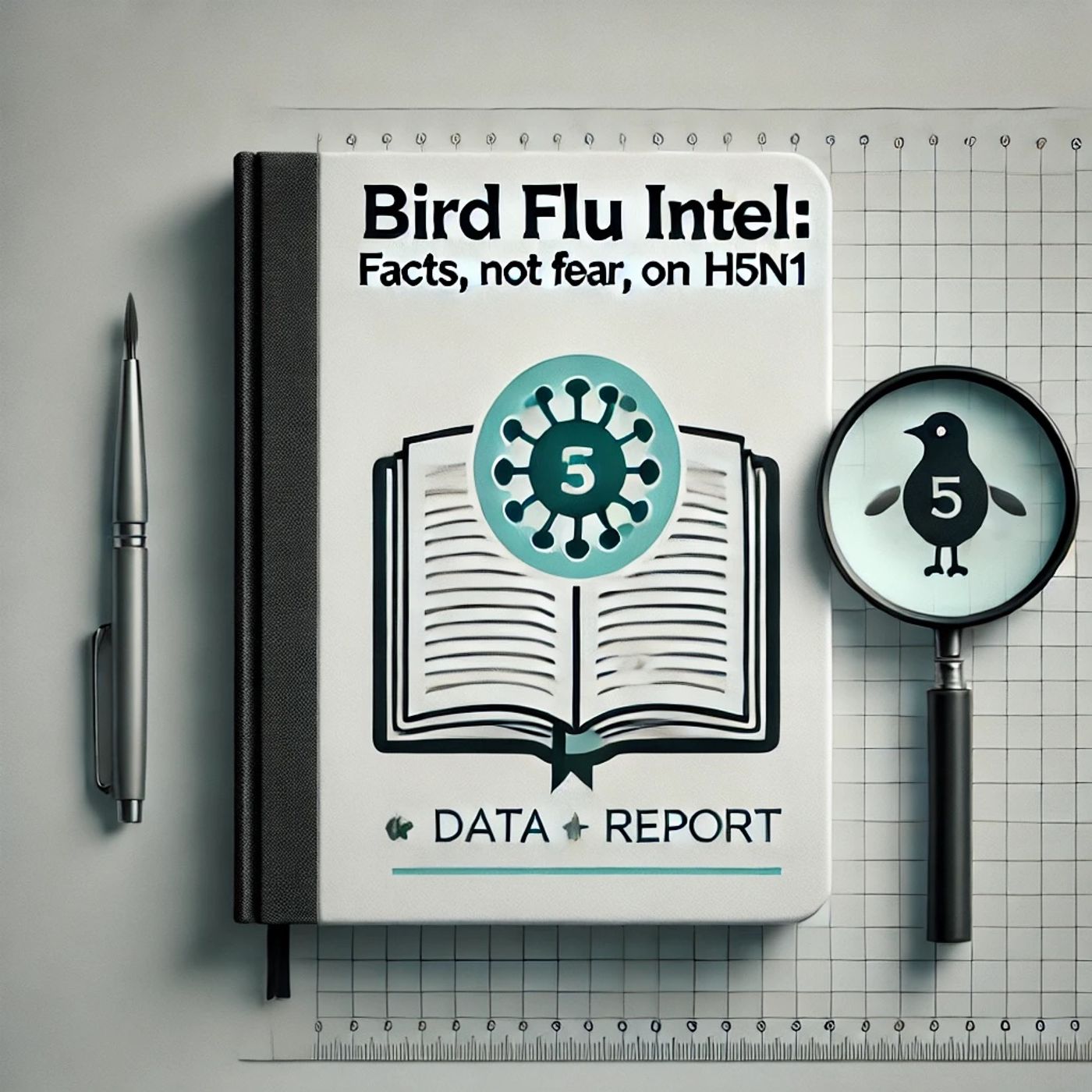Podcast Episode Details
Back to Podcast Episodes
H5N1 Bird Flu: Separating Fact from Fiction with Expert Insights on Current Transmission and Safety Risks
Welcome to Bird Flu Intel: Facts, Not Fear, on H5N1. I'm your host, and today we're cutting through the noise to give you the real science on avian influenza.
Let's tackle the biggest myths circulating right now.
Myth number one: H5N1 spreads easily between humans. The CDC reports that as of 2025, all 70 confirmed U.S. cases since 2024 resulted from animal exposure, with zero evidence of human-to-human transmission. The American Medical Association confirms the current public health risk remains low.
Myth number two: Drinking pasteurized milk is dangerous. This is completely false. The Barnstable County health department clearly states that pasteurization effectively kills H5N1 virus, making commercial milk supplies safe. The Cleveland Clinic emphasizes you cannot get bird flu from properly pasteurized dairy products.
Myth number three: All bird flu cases are fatal. While historically concerning, recent U.S. cases have been predominantly mild. The CDC data shows most infections caused only pink eye and minor respiratory symptoms. Only one death occurred in Louisiana in January 2025.
Myth number four: Eating poultry and eggs is unsafe. The Cleveland Clinic confirms you cannot get bird flu from properly cooked poultry or eggs. Any infected flocks are immediately removed from food supplies.
Why does misinformation spread so rapidly? Social media algorithms amplify sensational content over nuanced science. Fear-based headlines get more clicks than careful explanations. This creates real harm by causing unnecessary panic, reducing trust in public health authorities, and potentially leading people to make poor decisions about food safety or medical care.
So how do you evaluate H5N1 information quality? First, check the source. Trust established health organizations like the CDC, WHO, and major medical institutions. Second, look for specific data rather than vague claims. Third, be suspicious of absolute statements. Science deals in probabilities, not certainties. Fourth, verify through multiple reputable sources.
Here's the current scientific consensus: H5N1 primarily spreads through direct contact with infected animals or contaminated environments. The virus has adapted to infect dairy cattle, marking a significant development in 2024. Most human cases remain mild with proper medical care. Our food supply remains safe through existing safety protocols.
Where does legitimate uncertainty remain? Scientists are monitoring whether the virus might mutate to enable human-to-human transmission. They're studying the wild bird genotype found in the Louisiana fatality and a Canadian case, which appears more dangerous. Researchers continue investigating transmission patterns in dairy herds and wildlife populations.
The Johns Hopkins School of Public Health notes that while 2025 has seen fewer cases than 2024, vigilance remains crucial. Ongoing surveillance and research help us stay ahead of any changes in this evolving situation.
Remember, good science acknowledges what we know, what we don't know, and what we're working to understand. Fear thrives on uncertainty, but knowledge empowers us to make rational decisions.
Thanks for tuning in to Bird Flu Intel. Come back next week for more evidence-based insights. This has been a Quiet Please production. For more, check out Quiet Please dot A I.
For more http://www.quietplease.ai
Get the best deals https://amzn.to/3ODvOta
This content was created in partnership and with the help of Artificial Intelligence AI
Published on 16 hours ago